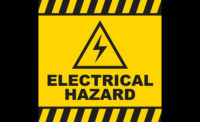January of 2018 saw the most recent update to 70E — the workplace electrical safety standard developed by the National Fire Protection Association (NFPA). While the standard itself is not a law, it was developed at the request of OSHA, which uses much of its language when assessing organizations for compliance. Many organizations also follow 70E to comply with specific OSHA regulations.
While 70E is already two-thirds of the way through its latest revision cycle, the 2018 update brought three changes that have made compliance challenging for many organizations due to their cost, the time needed to address them effectively, and the fact that all three are ongoing practices as part of an overall safety program. We will cover the three updates but will explore the third in-depth, as it is perhaps the most difficult — and costly — to satisfy.
Three 70E update changes:
1. PPE Declarations
First was the Standard for Protective Equipment [Article 130.7(C)(14)], in which personal protective equipment (PPE) manufacturers — such as those making arc-rated safety clothing and gear — were required to adhere to certain criteria in order to sell their products. Three self-declaration methods were provided for meeting these criteria: 1) use of supplier’s declaration of conformity; 2) item 1 as well as registration under a registered quality management system and product testing by an accredited laboratory; and 3) items 1 and 2 as well as certification by an accredited independent third-party certification organization.
This standard was the result of some manufacturers selling equipment that was visually similar yet inferior to proper PPE. While PPE is expensive, investing in quality equipment is critical to ensuring safety. Manufacturers should adhere to one of the three methods for self-declaration under the article, and safety managers and employers should verify that these declarations are present on the equipment before distributing it to employees.
2. Job Safety Plans
The second change to NFPA 70E in 2018 was the addition of a job safety plan procedure, which replaced the former job safety briefing. The job safety plan must be completed prior to any electrical work. The plan must be filled out and discussed with those involved. The challenge is that a number of steps must be taken before the job can be finished. Whereas companies may have previously used a job hazard analysis (JHA), this new plan expands upon it by adding the hierarchy of risk control methods from the NFPA to identify ways to reduce the risks.
Another requirement in 70E is accounting for human error. Annex Q in the standard discusses this in-depth and instructs organizations on how to apply it to the job safety plan. Qualified employees should invest the time in understanding this addition to the standard, despite the time and training investment required. The addition is two years old, yet many companies are still working toward complying with both the plan and human error component.
3. Equipment Condition and Maintenance
The third change to NFPA 70E focuses on proper equipment monitoring and maintenance. The decision-making responsibility for this area now stands with the most qualified person on the job. This individual must determine the likelihood that an incident — such as an arc flash — will occur. Ultimately, this determination boils down to the condition of equipment. A key component of this is to follow manufacturer recommendations, which specify certain types of maintenance and frequency to ensure equipment continues to operate appropriately.
Only by performing this maintenance on a consistent basis can companies know for a fact that their equipment is actually working properly. But because many industries are still using older equipment that has had little maintenance over the years, the risk present in their production or operating environments remains high. To solve for this, consider making a list of serviceable equipment you rely on for operations so you know where and how to prioritize maintenance.
Four key electrical inspections for equipment maintenance
Numerous electrical assets such as electrical switch gears, control boards, and disconnects — even mechanical assets — can experience electrical problems with age, interference, or poor connections. And while most organizations already have an electrical maintenance program in place, often the focus is reactive rather than proactive. To be in compliance with the third NFPA 70E update, ongoing inspections will be valuable in the long run as they help to identify equipment issues before they become serious and costly problems.
1. Physical/Visual Inspection
Conducted by a qualified person, a physical or visual inspection assesses electrical assets to identify impending failures or wear-and-tear problems. These might include dark spots, excessive heat or burning, frayed wires, missing knockouts, dents, and gaps. While this type of inspection can identify issues immediately, it requires asset cabinets to be opened. To do this safely, the asset must be de-energized and that de-energization must be verified. Since the asset is de-energized, this type of inspection must be planned properly to ensure minimal impact to productivity and operations.
2. Infrared Thermography
Whereas physical inspections require asset de-energization, another type of inspection ensures the asset can continue running and be inspected without impacting operations. Using infrared thermography, electrical assets can be inspected using infrared windows and specialized equipment to identify hot spots. Often, these hot spots are the result of poor connections or aging components. Over time, they begin to build up heat, which puts the asset at risk of causing a fire or suffering heavy damage. Infrared inspections can also be performed by de-energizing the asset if the opportunity is available.
3. Vibration Testing
Many electrical assets and mechanical assets use moving parts for various purposes. Over time, these components can wear out. For example, bearings in an old motor might wear down or come loose, resulting in vibrations. When this occurs, it’s time to replace the component. Doing so as soon as possible can protect the motor and larger asset as a whole from significant damage. Excessive vibration also leads to additional maintenance costs and efficiency challenges, so addressing them as quickly as possible is critical. Vibration testing and monitoring helps identify these troublesome areas so organizations can move quickly upon detection.
4. Ultrasound Testing
Just as with household appliances, strange or louder-than-usual sounds may indicate that an electrical asset is in need of repair. These sounds can be caused by anything from deterioration of components over time to poor connections. Just as with other inspections, an ultrasound inspection helps to identify potentially failing components so organizations know what is in need of repair, what its condition is, and what the potential cause may be.
When it comes to safety, all investments are worthwhile
Safety managers, risk managers, plant managers, facility managers, and the countless other individuals who are responsible for equipment will understand that services related to electrical asset maintenance are not inexpensive. However, they are absolutely essential — and the more proactive those services are, the better. Depending on the organization, even one asset going down can impact productivity and overall operations.
Manufacturers, food processors, pharmaceutical companies, and countless more that depend on consistent uptime know that every piece of equipment plays its part, and when it’s not functioning properly, the costs and lost opportunities start to add up quickly. A single asset can hamper all types of metrics that organizations track as well — from productivity scores and efficiency ratings, which ultimately harm the bottom line as well.
Yet far worse are the risks to employees and others that may come into proximity with a failing asset. These problems, left unchecked, can quickly lead to a fire as internal temperatures start to rise — or create lethal arc flash hazards. As organizational leaders, it is our responsibility to do all that we can to ensure our employees, customers, facilities, and assets remain safe.
To that end, a proactive approach toward implementing the new additions of NFPA 70E as quickly as possible will yield significant returns in the long run by reducing electrical injuries, protecting valuable equipment and facilities, and maintaining productivity.
The New Year is here, and with it begins the final year of the 70E 2018 revision. What will 2020 bring? We’ll know before long, but for now, we must do all that we can with the guidance that the 2018 revision has brought us to ensure safety now and for the years to come.



